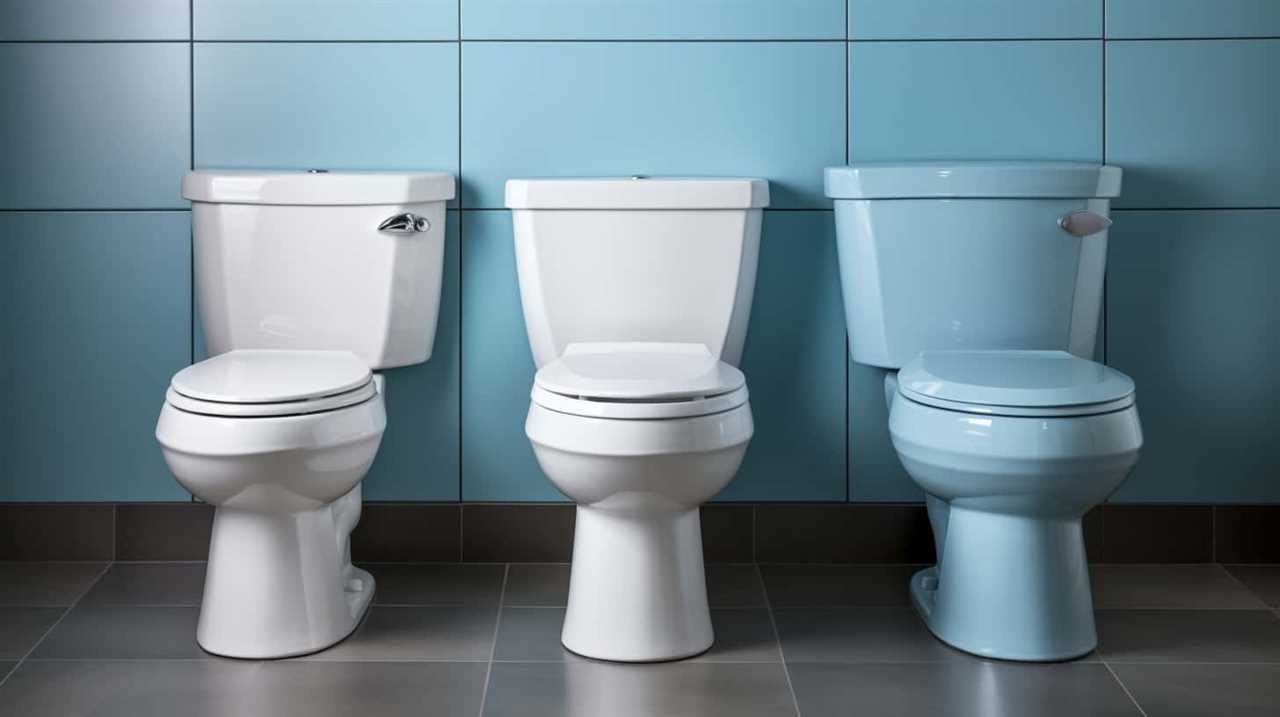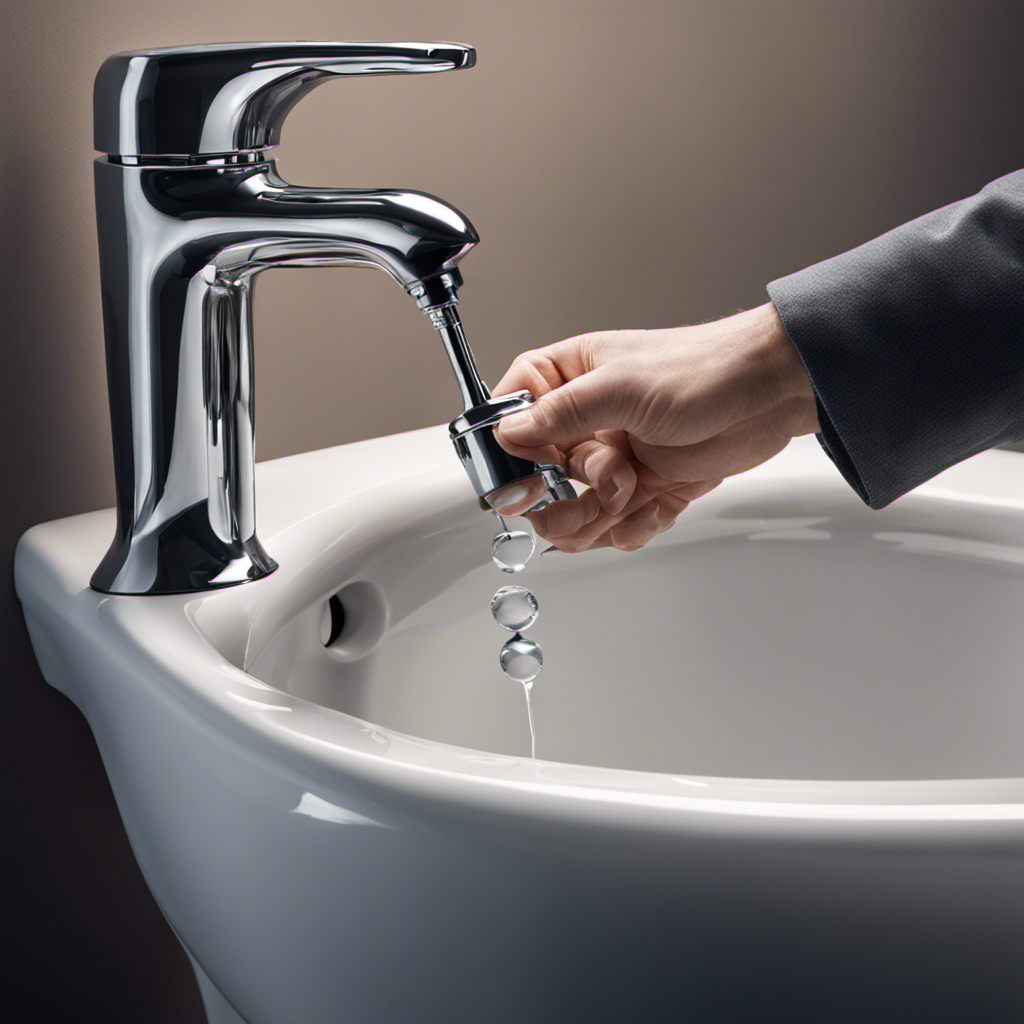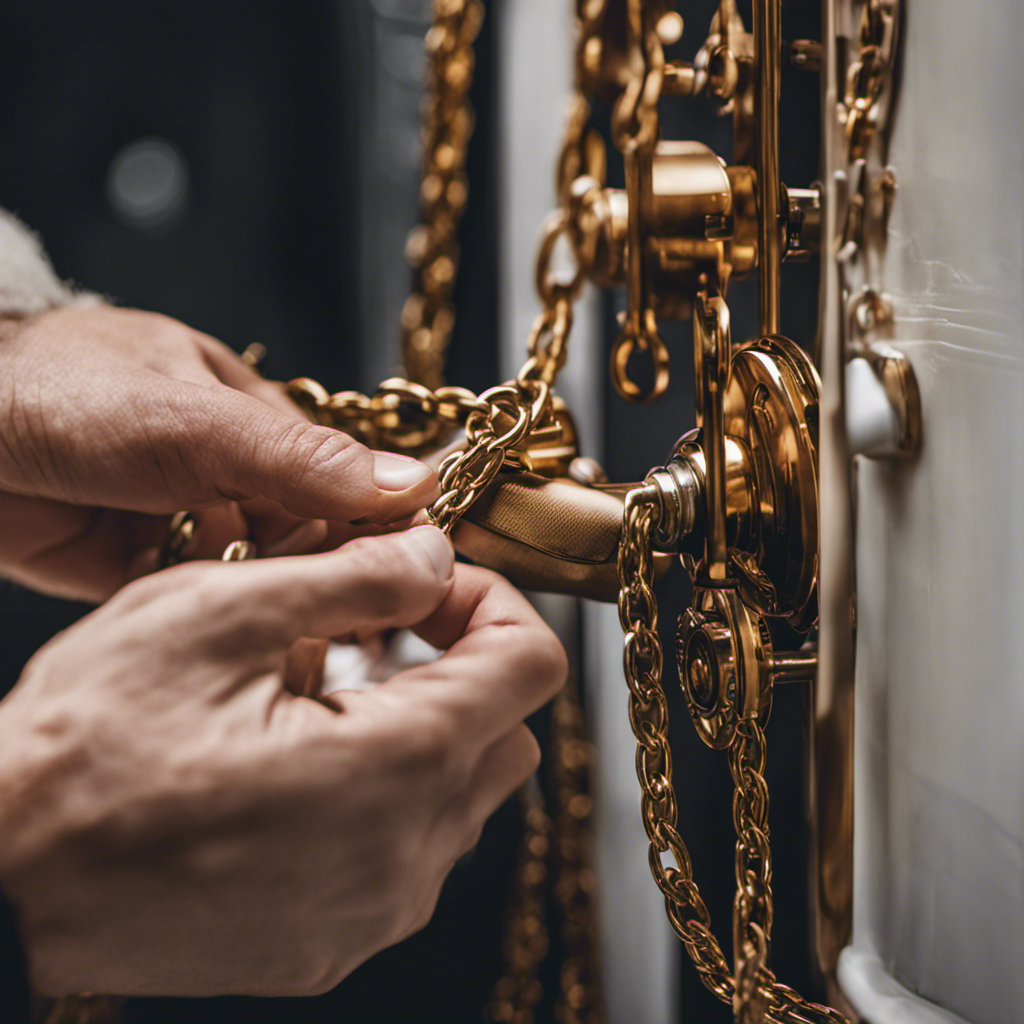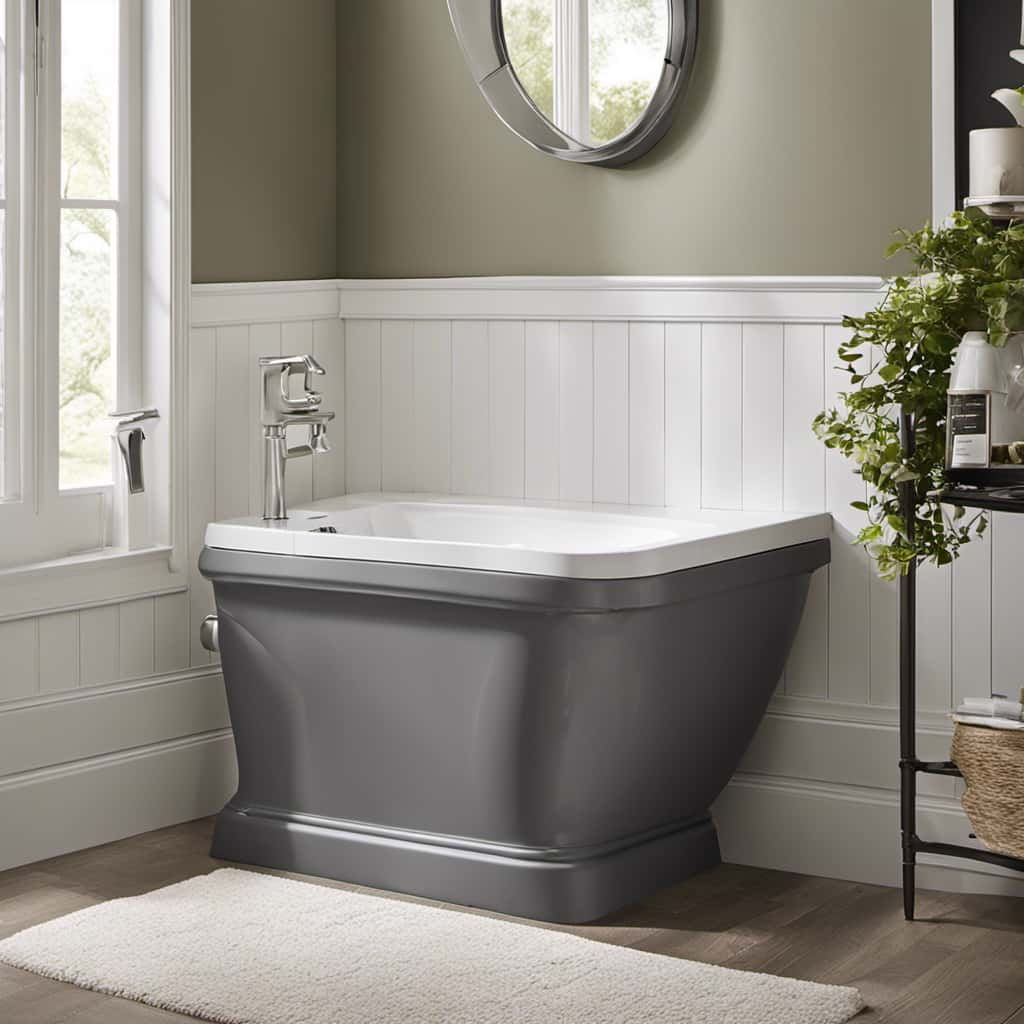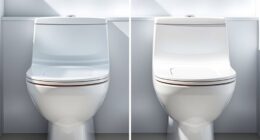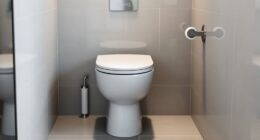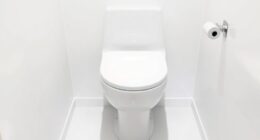We understand what you may be wondering: “Do Turkish toilets come with water or toilet paper?”
Well, let us fill you in on the fascinating cultural differences in toilet facilities.
In Turkey, they have their own unique customs and practices, including the water-based cleaning method.
We’ll explore the pros and cons of using water, and provide you with tips for navigating Turkish toilets.
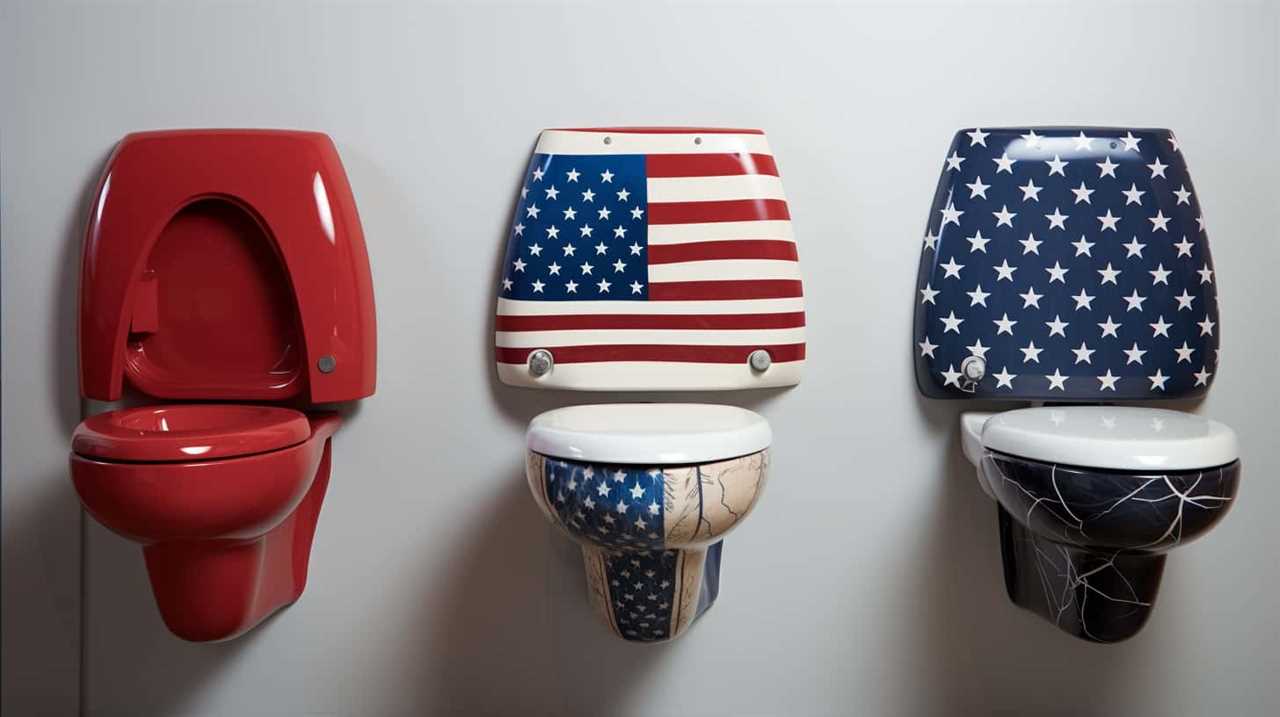
So, get ready to master the art of toilet etiquette in Turkey!
Key Takeaways
- Turkish toilet customs revolve around using water for cleaning.
- Water-based cleaning ensures thorough cleanliness and removes bacteria.
- Using water for cleaning is considered more hygienic and gentle on the skin.
- Adjusting to the cultural norms of using water may take time.
Cultural Differences in Toilet Facilities
When it comes to toilet facilities, we noticed striking cultural differences between countries. Cultural practices and hygiene considerations play a significant role in shaping these variations.
In some countries, like Japan, toilets are equipped with advanced features like bidets and heated seats, reflecting their emphasis on cleanliness and comfort.
On the other hand, in many African countries, squat toilets are prevalent due to cultural traditions and the belief that this position is more hygienic.
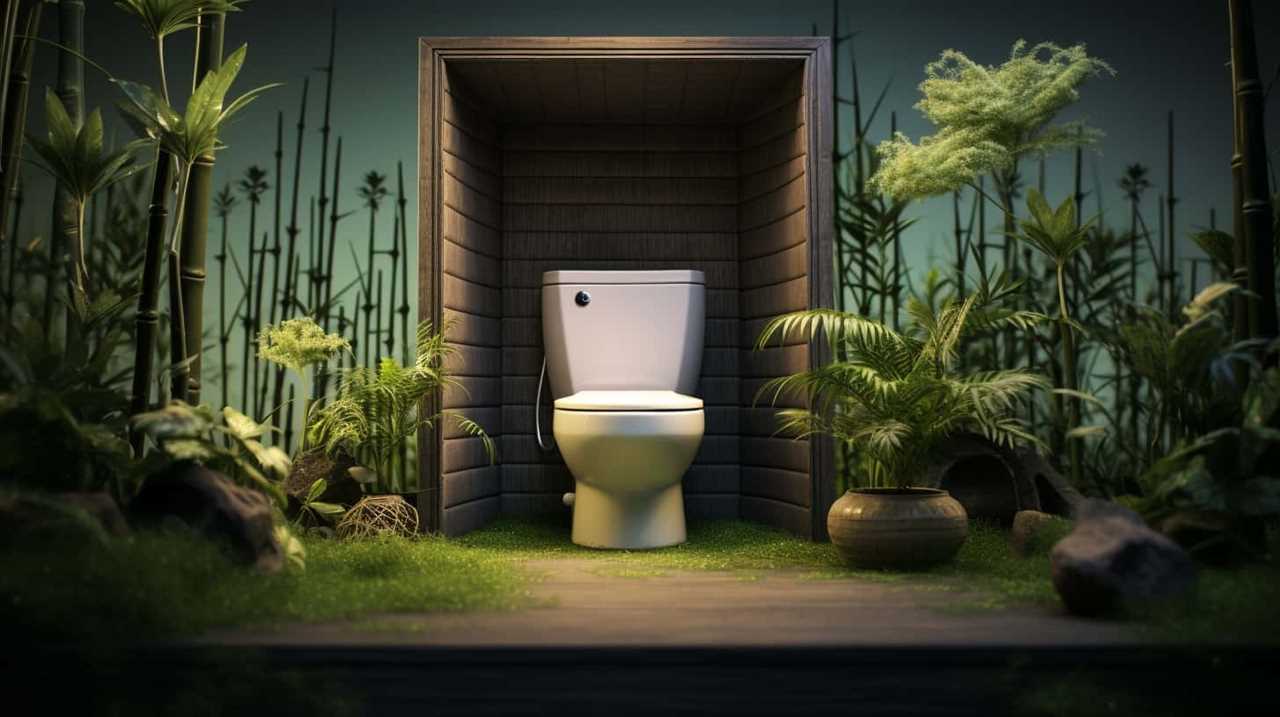
In some Middle Eastern countries, water is preferred over toilet paper for cleaning purposes, reflecting their cultural practices and religious beliefs.
These cultural differences in toilet facilities highlight the importance of understanding and respecting diverse practices and preferences when it comes to hygiene and sanitation.
Turkish Toilet Customs and Practices
Turkish toilet customs and practices revolve around the use of water for cleaning purposes, reflecting their emphasis on hygiene and cleanliness. Throughout history, Turkish toilet hygiene practices have undergone a significant evolution. In traditional Turkish toilets, a copper jug filled with water was used for cleaning, while in modern times, bidets and sprayers have become more common. This transition highlights the Turkish people’s commitment to maintaining high standards of cleanliness. To provide a clearer picture of Turkish toilet customs, let’s take a look at the following table:
| Toilet Hygiene Practices | Historical Evolution |
|---|---|
| Use of water for cleaning | Traditional Turkish toilets utilized a copper jug filled with water. |
| Bidets and sprayers | Modern Turkish toilets often feature bidets or sprayers for a more efficient and thorough clean. |
Understanding these customs sets the stage for exploring the water-based cleaning method in the subsequent section.
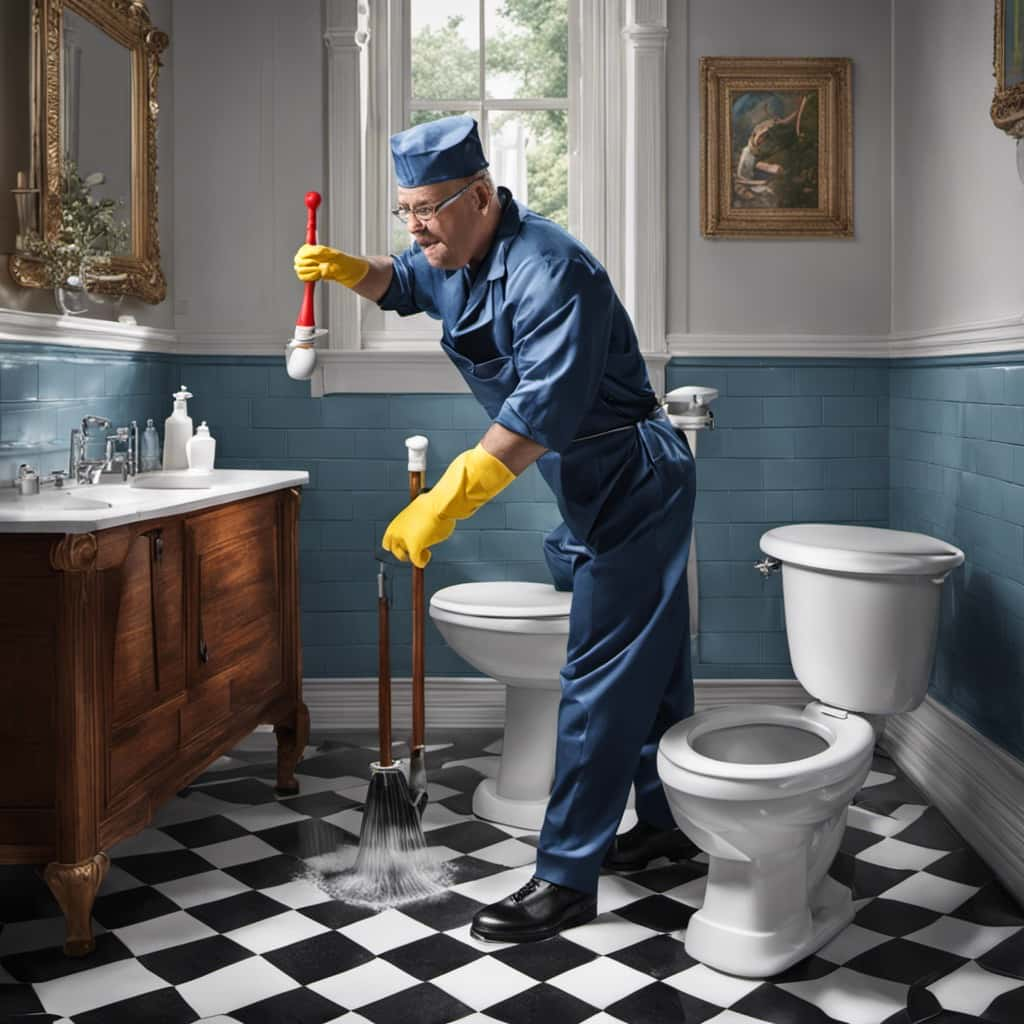
The Water-Based Cleaning Method
As we delve into the topic of Turkish toilet customs and practices, it’s important to examine the water-based cleaning method that has been a significant part of Turkish hygiene traditions. This method, which involves the use of water for cleaning oneself after using the toilet, offers several advantages in terms of toilet hygiene and environmental impact:
- Water-based cleaning ensures thorough cleanliness by effectively removing bacteria and germs.
- It minimizes the need for excessive toilet paper usage, reducing waste and environmental impact.
- The use of water promotes a soothing and refreshing feeling, enhancing personal hygiene practices.
- Water-based cleaning is gentler on the skin, reducing the risk of irritation or discomfort.
- It’s a more sustainable approach as it reduces reliance on paper products and contributes to a greener environment.
Pros and Cons of Using Water
Using water for cleaning oneself after using the toilet has both advantages and disadvantages. Let’s take a closer look at the pros and cons of this method.
| Advantages | Disadvantages |
|---|---|
| – Thorough cleansing | – Requires water source |
| – Hygienic | – Not eco-friendly |
| – Gentle on the skin | – Limited accessibility |
| – Reduces odor | – Potential mess |
| – Soothing and refreshing | – Cultural adjustment |
One of the main advantages of using water is the thorough cleansing it provides. Water effectively removes bacteria and leaves you feeling cleaner. It is also considered more hygienic compared to using only paper. Additionally, water is gentle on the skin, preventing irritation or discomfort.
However, using water does come with some disadvantages. It requires access to a water source, which may not always be available, especially in outdoor or public restrooms. This method is also not eco-friendly, as it leads to increased water usage. Moreover, it may take some time to adjust to the cultural norms of using water for cleaning oneself after using the toilet.
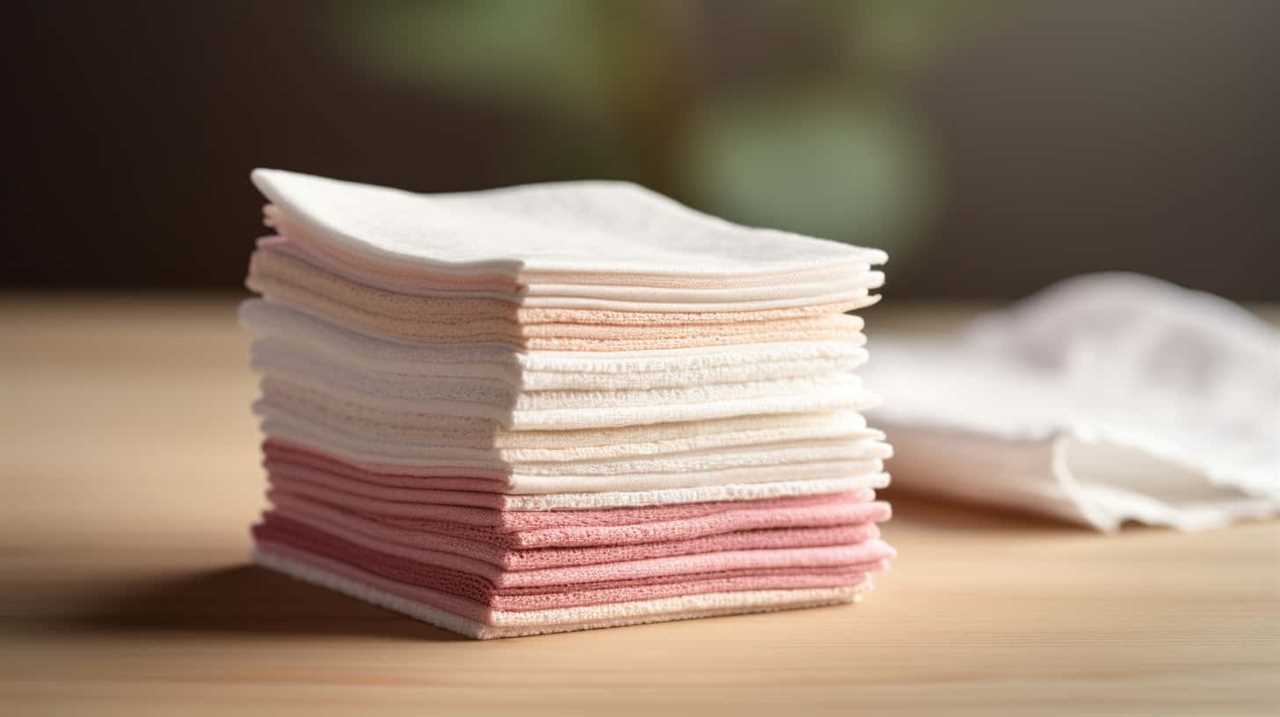
Tips for Navigating Turkish Toilets
When visiting Turkey, it’s helpful to familiarize ourselves with practical tips for navigating the toilets. Here are some important tips to keep in mind:
- Maintain Toilet Hygiene: Carry your own toilet paper or wet wipes as they may not be provided. It’s also a good idea to bring hand sanitizer for extra cleanliness.
- Master the Squatting Position: Turkish toilets are typically squat toilets, so it’s important to know how to use them. Practice your squatting position before your trip to ensure comfort and stability.
- Watch Your Step: The floors in Turkish toilets can be wet and slippery, so be cautious when entering and exiting the facilities.
- Respect Local Customs: Remember that Turkish toilets may not have Western-style plumbing, so avoid flushing toilet paper or other items down the toilet.
- Be Prepared for Differences: Turkish toilets may lack certain amenities such as seat covers or privacy doors, so be mentally prepared for these differences.
Frequently Asked Questions
Are Turkish Toilets the Only Type of Toilets Used in Turkey?
No, Turkish toilets are not the only type used in Turkey. There are alternative toilet options available, such as Western-style toilets. To understand the history of toilets in Turkey, it is essential to explore their evolution over time.
Are There Any Specific Etiquettes or Customs Associated With Using Turkish Toilets?
When using Turkish toilets, it is important to be aware of Turkish toilet etiquette and traditional toilet customs. These customs may include using water instead of paper and following specific cleaning rituals.
How Do Turkish Toilets Compare to Western-Style Toilets in Terms of Cleanliness?
Turkish toilets differ from Western-style toilets in terms of cleanliness. Bidet toilets, common in Turkey, provide a more thorough cleaning experience. Cultural differences in toilet cleanliness exist, but it’s important to respect local customs.
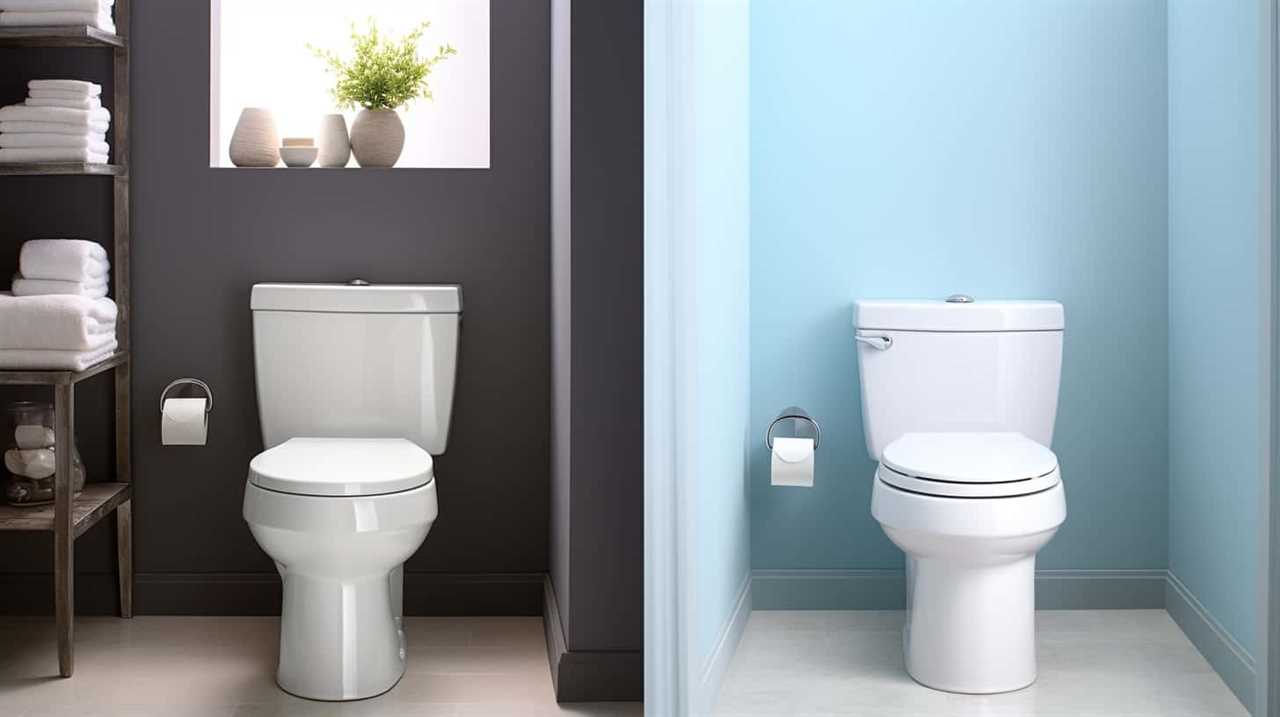
Are There Any Health Benefits or Drawbacks to Using Water for Cleaning Instead of Toilet Paper?
There are health benefits to using water for cleaning instead of toilet paper, such as increased cleanliness and reduced risk of infection. Additionally, using water is more environmentally friendly, as it reduces the amount of paper waste.
Are There Any Specialized Techniques or Tips for Using Turkish Toilets Effectively?
When it comes to using Turkish toilets effectively, there are various specialized techniques to consider. Understanding proper body positioning, using the built-in water source, and maintaining hygiene are key for an efficient and clean experience.
Conclusion
In conclusion, Turkish toilets provide a unique cultural experience by offering the choice between water and paper for cleaning.
While the water-based method is preferred by locals for its thoroughness and hygiene, it may take some getting used to for visitors.
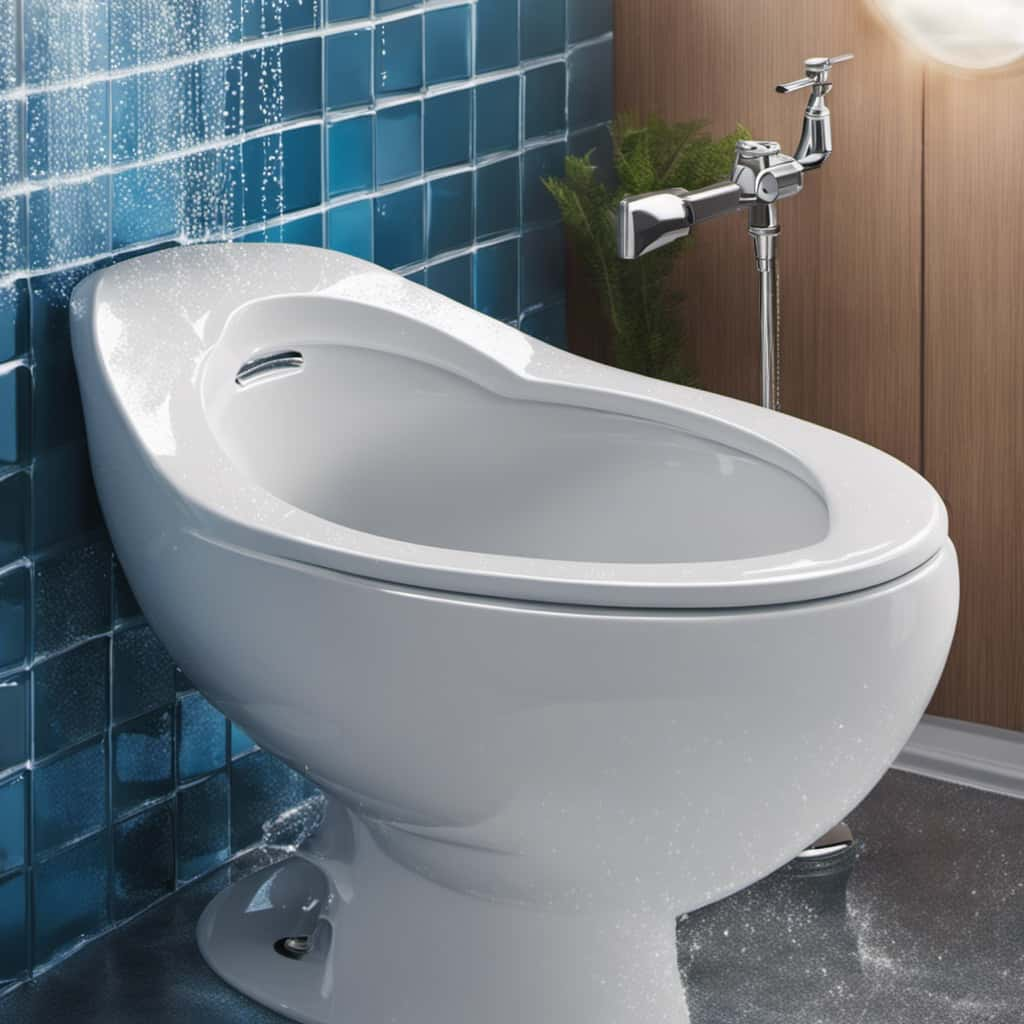
By considering the pros and cons of each option and following the tips provided, navigating Turkish toilets can become a seamless and enlightening part of your cultural journey.
